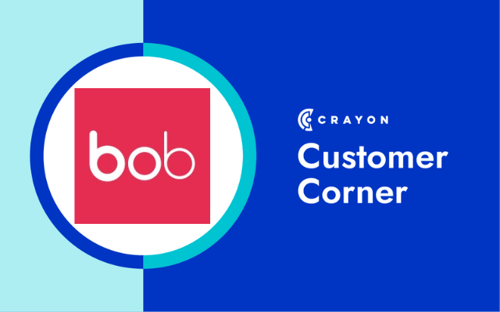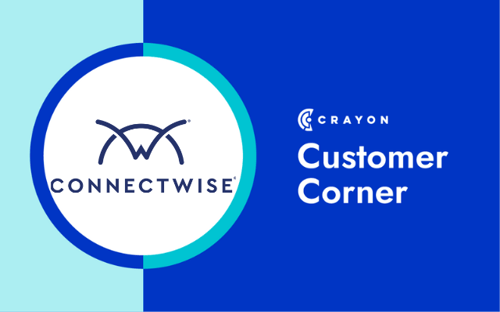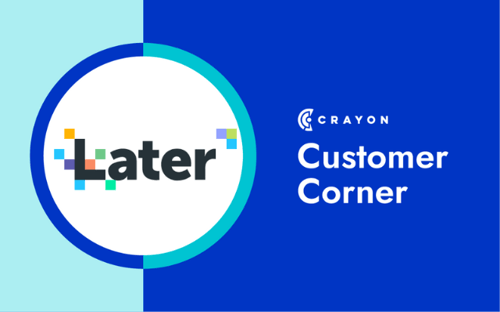Few things are more intimidating than the prospect of an audit.
You know, those mildly invasive processes in which someone from an SEO consultancy or the IRS or some other authoritative three letter organization climbs inside of your website or tax returns or whatever and unearths traces of failings past (accidental or otherwise).
This is going to be kind of like that, only the shoe’s on the other foot.
That’s right… Today we’re talkin’ audits. More specifically, competitive audits.
What is a competitive audit?
Generally speaking, an audit is a systematic assessment of something.
It’s also the term used to reference a course taken purely out of interest.
If, for example, you were particularly jazzed at the prospect of learning how to build a meaningful, measurable competitive intelligence program, you might audit a course with Crayon Academy.
A competitive audit is a systematic assessment of your competition.
It’s worth noting that the word “systematic” in this definition is doing a lot of heavy lifting. A competitive audit is not all-inclusive. Rather, it’s a focused exercise with a narrow scope.
Competitive Audit vs Competitive Landscape Analysis
As we have established, a competitive audit is a systematic assessment of your competitors.
On the other hand, competitive landscape analysis refers to the ongoing process of surveying the market in an effort to deepen your understanding of who you’re competing with and where each competitor stands in the context of the overall landscape.
The key differentiator here is that competitive landscape analysis doesn’t end.
The landscape shifts. Competitors come and go. Businesses that were once threats get stale and fail to adapt to the market’s needs, while newcomers can pop up and eat your lunch with no warning whatsoever. As a result, your competitive landscape analysis is a dynamic artifact that changes over time — a discrete, logical endpoint that can only be defined by the shuttering of your business.
A competitive audit, on the other hand, represents a specific snapshot in time. It should be a quarterly or annual exercise, intended to help a keen practitioner of competitive intelligence zero in on some targeted facet of a specific cohort of competitors, and yield actionable insights.
How to Conduct a Competitive Audit in 5 Steps
Before diving into how to conduct a competitive audit, let’s start with when.
Because a competitive audit is a framework designed to help you surface something specific, they should be run whenever you see fit.
Whereas annual or quarterly updates to a competitive landscape analysis might be a more effective way to track changes in the market over time, a competitive audit can help you dig into a specific facet of a specific group of competitors at a specific point in time.
For that reason, we’d suggest running a competitive audit whenever you need to, in order to maximize the actionable insights it yields.
Step 1) Answer the question: What am I auditing?
If you plan to use your competitive audit as the foundation for a business-wide pivot, the scope of your audit (meaning the questions that guide its execution) is going to end up looking completely different from that of someone analyzing content opportunities with high commercial intent.
As such, it’s imperative that you give yourself guardrails.
In this case, I am referring to a) the questions you use to guide your audit, and b) the qualitative and/or quantitative data you’re going to use to measure the outcomes associated with those questions.
Let’s look at a quick example.
A sales manager hits you in Slack. She’s convinced Competitor X is blowing up your deals, and it’s all because of their slick new positioning (maybe she says, “they’re slapping lipstick on a pig AND IT’S WORKING,” but with 1-3 expletives sprinkled in for emphasis). It’s audit time.
You aim to determine how Competitor X’s recent rebrand has impacted win/loss in the last 60 days, and decide to base your audit on the following factors:
- Quantitative criteria: Competitive win/loss rate now vs pre-rebrand
- Qualitative criteria: Conversation intel in which competitor X was mentioned; data from Moat or the Internet Archive articulating what changed
Now that you’ve established a key question (or questions), determined the kind of data you’re looking for, and how you’ll measure it, we’d also suggest taking it a step further and going back to the sales manager. Ensuring their buy-in (and that of any other relevant internal stakeholder) from the get go will increase the likelihood that the results of your audit and the collateral it yields don’t go unnoticed and unused.
Step 2) Determine who your competitors are.
Once you’ve figured out what you’re auditing, it’s time to focus on who you’re auditing.
Now, this might be rather straightforward, as outlined in the example above. If you’re only looking to go super deep on a single competitor. Great.
Likelier, though, you’re going to want a broader swath of the market for your analysis to bear fruit.
For that reason, we suggest the following:
- One aspirational competitor: An aspirational competitor is a company that you admire for the work they’re doing in a related field. You’re not currently competing with them for business, but as you formulate a vision for the future, it’s not out of the question.
- Three to five direct competitors: Direct competitors are those with which you compete — head-to-head — for sales and market share. If a prospect is evaluating your product or service, there’s a good chance they’re familiar with at least one of your direct competitors.
- One cautionary tale: You’ve got a superlative. You’ve got the field. You need an example of a business that’s bringing up the rear.
That middle group is pretty obvious, but the great and not-so-great businesses are just as important to include in your suit. Say you’re auditing pricing packages / pages. Developing an understanding of what to do and what to avoid at all costs is imperative! Similarly, by selecting points of comparison outside of the echo chamber that is your direct competition, the activations that you spearhead post-audit might draw inspiration that helps your business stand out from the competitive landscape.
Step 3) Gather data.
Now for the tedious part. Just kidding!
If you use Crayon, that is.
In addition to the unparalleled volume —100+ types of competitive intel across millions of unique data sources — of programmatically sourced data on which to build the foundation of your audit, we also integrate with best-in-class CRM and conversational intelligence solutions, allowing you to source first-party field intelligence, too.
Now, if you aren’t using Crayon, this is a labor intensive step in the audit process. Fortunately, if you defined your guiding questions and target competitors, you should be working within a relatively narrow scope. Time to get to work!
Step 4) Analyze data.
You’ve determined what and who you’re auditing. You’ve sourced the requisite data. Now let’s do something with it.
There are many ways to analyze competitive intelligence, but perhaps the most common is the trusty SWOT analysis.
SWOT stands for Strengths, Weaknesses, Opportunities, and Threats. It’s a way for you to organize, normalize, and contextualize your findings, providing the perfect jumping off point for the creation of actionable insights and collateral.
The downside to a SWOT analysis is that it isn't necessarily the most useful way to conduct a side-by-side comparison. If you think something of that ilk is more your speed, you might consider a comparative matrix:
This is a helpful, visually organized way to understand how your company’s offerings stack up to those of your competitors. The “feature groups” can of course be swapped to fit within the parameters of your audit.
Step 5) Do something with it.
This is the part everyone forgets, but it’s without a doubt the most important step in conducting a worthwhile competitive audit.
The results of your analysis must be taken a step further: You need to share your findings in a way that moves the needle for your business.
Maybe that means building out a competitive matrix to help your sales reps contextualize the competitive landscape after a slew of recent feature launches, in which the axes are informed by the parameters you established in step one.
Maybe it’s something WAY bigger, like a feature that fills a newly identified gap in the market.
Let’s return to our example from step one (Competitor X’s rebrand and its impact on win/loss).
The quantitative data indicate that the win/loss rate has remained static, but it’s the volume of deals in which Competitor X has been brought up in the last 60 days that’s driving your sales manager to tears. Clearly prospects are noticing the rebrand.
Obviously there are myriad ways to turn your competitive audit into something tactical, like…
- An overhauled battlecard that specifically addresses the changes in messaging and positioning introduced in the rebrand
- A talk track that reps can use to highlight qualms your competitor’s newest customers have cited in G2 reviews, and how your product addresses those irksome shortcomings.
- Cheeky paid ads run on branded SERPs and against the latest TechCrunch article singing the praises of Competitor X
Don’t let your hard work go unnoticed: Ensure your competitive audits yield tangible business impact by recommending action items to stakeholders across your organization (or executing on their behalf).
Unlock Valuable Competitor Insights with Crayon’s Free Competitive Landscape Report
If you could automate three of the five steps in the competitive audit, would you be likelier to conduct one?
Thought so.
Well you can do just that with Crayon.
Crayon’s best-in-class competitive intelligence platform programmatically taps into data across millions of sources, allowing you to focus your competitive audits on analysis and execution instead of rote data collection.
What are you waiting for? Book your demo today.
.jpg)
Related Blog Posts
Popular Posts
-
 The 8 Free Market Research Tools and Resources You Need to Know
The 8 Free Market Research Tools and Resources You Need to Know
-
 How to Measure Product Launch Success: 12 KPIs You Should Be Tracking
How to Measure Product Launch Success: 12 KPIs You Should Be Tracking
-
 24 Questions to Consider for Your Next SWOT Analysis
24 Questions to Consider for Your Next SWOT Analysis
-
 How to Create a Competitive Matrix (Step-by-Step Guide With Examples + Free Templates)
How to Create a Competitive Matrix (Step-by-Step Guide With Examples + Free Templates)
-
 6 Competitive Advantage Examples From the Real World
6 Competitive Advantage Examples From the Real World




